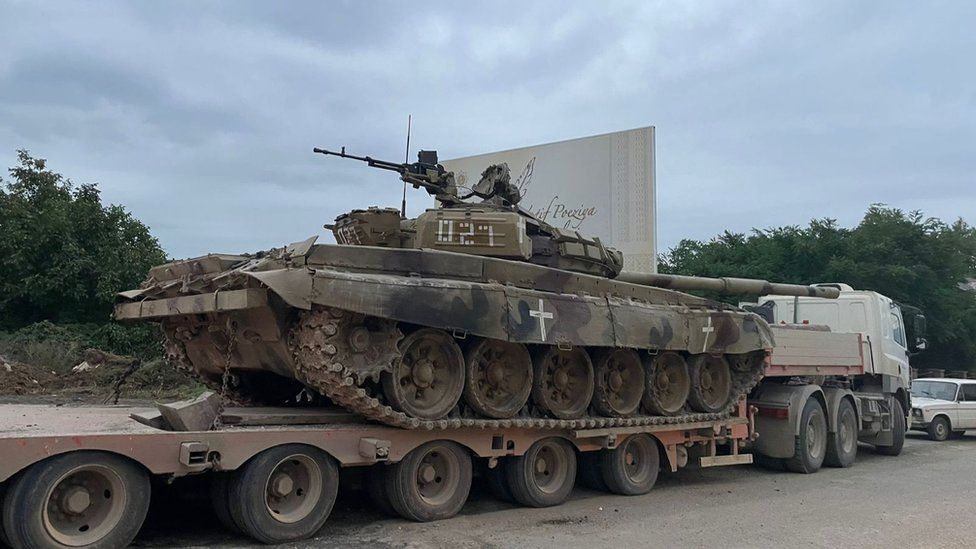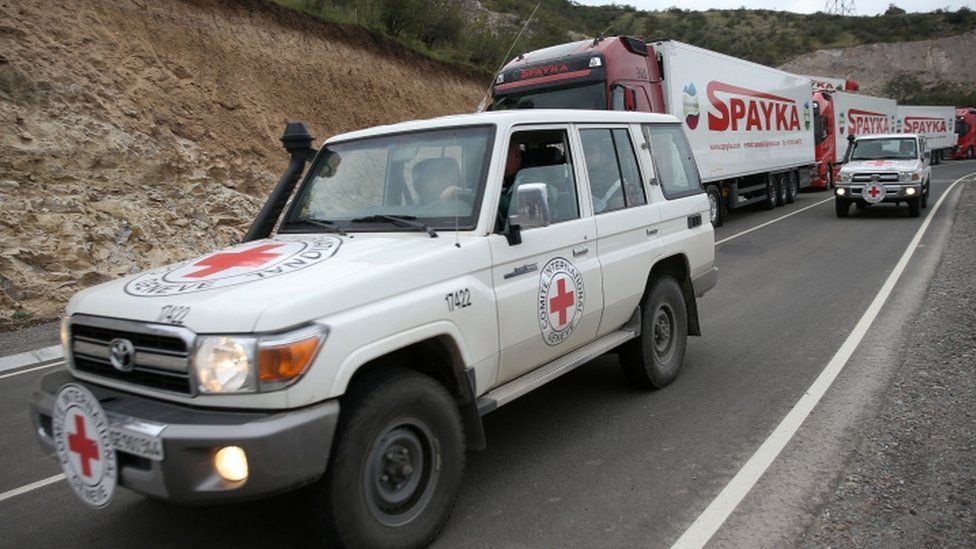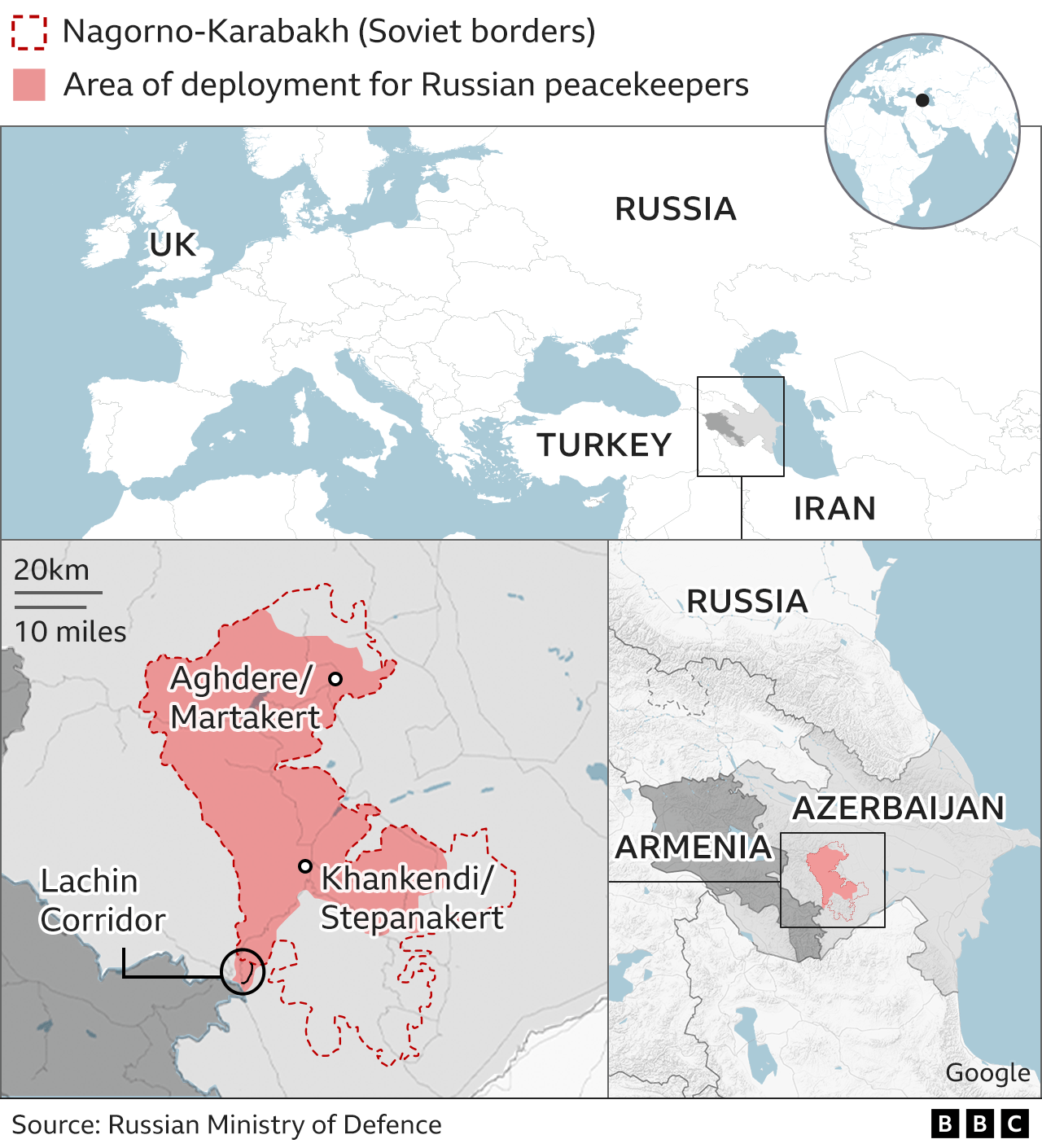Karabakh humanitarian fears grow with thousands sleeping on Stepanakert streets

Russia’s defence ministry said six armoured vehicles, more than 800 guns and about 5,000 units of ammunition had been handed over so far.
It is unclear what will happen to the 120,000 ethnic Armenians in Nagorno-Karabakh. Azerbaijan says it wants to reintegrate the region and an Azerbaijani official told the BBC that “no one is kicking anyone out”.
“If we didn’t care about civilians, women and children, we would have simply entered Khankendi,” he added.
Another official said that the military had prepared camps for refugees outside of Karabakh that were “ready to accept civilians” – but there is much mistrust on both sides and many ethnic Armenians may not be willing to move.
Azerbaijan has also told the UN that it will treat Karabakh Armenians as “equal citizens”. But their destiny is in Azeri hands now.
It says it envisages an amnesty for those Karabakh fighters who hand over their weapons and they can leave for Armenia if they choose.

Armenia has also set up facilities to take in thousands of civilians but Prime Minister Nikol Pashinyan has said he did not want them to leave unless they had to.
People in Stepanakert have told the BBC that many are likely to choose to leave.
“I don’t know anyone who wants to stay here. I have very close elderly relatives who lost their sons in previous wars and they prefer to die here,” journalist Siranush Sargsyan said.
“But for most people, for my generation, it’s already their fourth war.”
US Senator Gary Peters, who is leading a congressional delegation to the Armenia-Azerbaijan border, said people in Nagorno-Karabakh were “very fearful” and called for the creation of an international observer mission.
“I think the world needs to know exactly what’s happening in there,” he said. “We’ve heard from the Azerbaijani government that there’s nothing to see, nothing to worry about, but if that’s the case then we should allow international observers in to see.”

Areas where the BBC was allowed to visit appeared empty of civilians. Only police, soldiers and a few construction workers could be seen.
There were no smiles from Russian peacekeepers that the BBC saw, and the mood was serious. But so far, there has been no major violence since the surrender.
Armenia-Azerbaijan: Nagorno-Karabakh map





